Author: Daniel Bevis
Photography: Renault / Daniel Bevis
It’s been a turbulent 40 years for the GTT.
The Renault 5 GT Turbo of 1985 sat at the end of a winding and adventurous path. Its roots lay way back in the Renault 5 Alpine of 1976; there’s much debate over what car can rightfully lay claim to being ‘the first hot hatch’, but it’s worth noting that the 5 Alpine arrived a good couple of months before the Golf GTI…
By 1982, a turbo had been strapped on to create the 5 Alpine Turbo. This was built on the technological nous gleaned from 1980’s Renault 5 Turbo, an insanely wide mid-engined homologation monster that demanded further nomenclatural unpicking. Assorted 5s with assorted turbos. All of this was very good fun. And with the advent of the second-generation Renault 5 in 1984, the scene was set to stir in a little refinement (well, in relative terms) and offer a boosted Supercinq for the everyday driver.
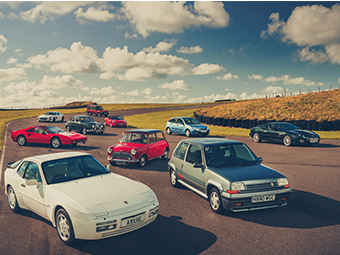
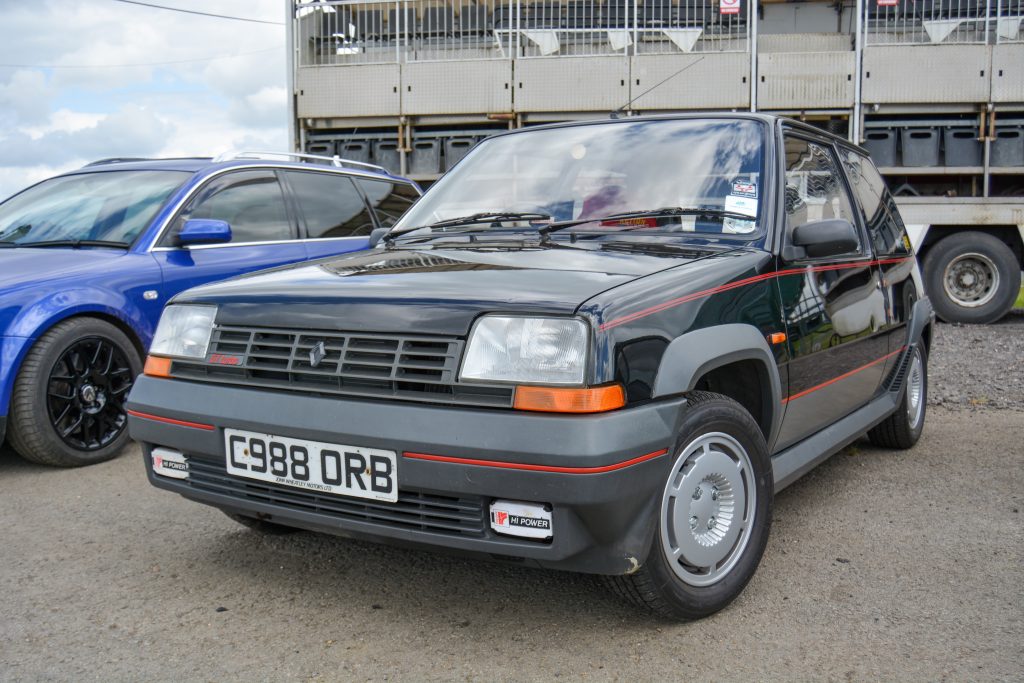

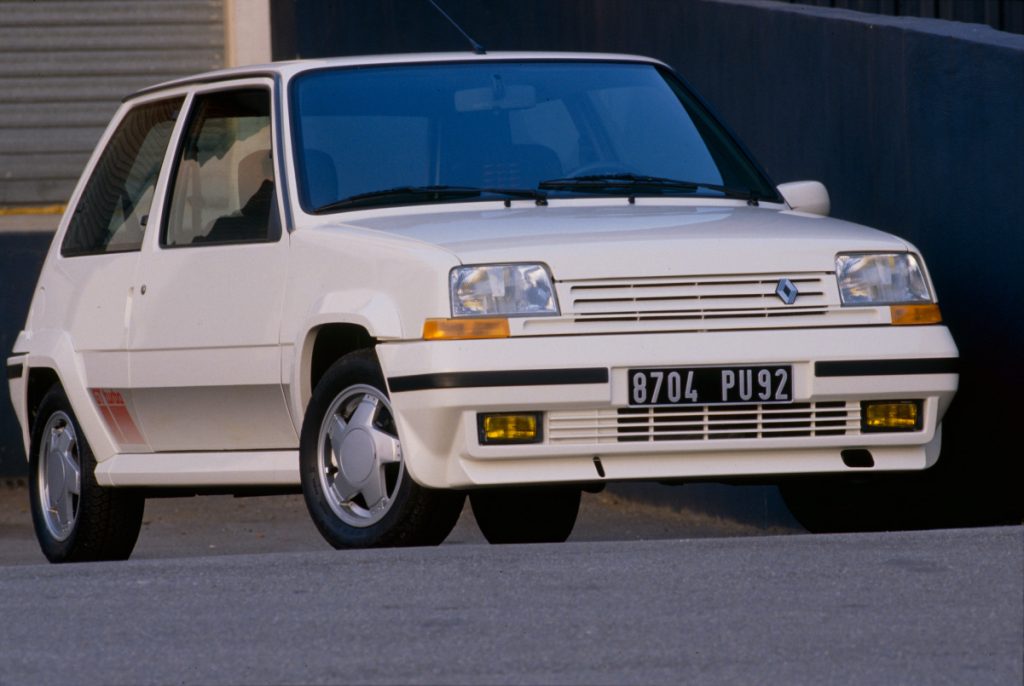
Phase One: New Moon
It was perhaps an unlikely base for what would become a performance icon, the Renault 5’s 8-valve 1397cc Cléon engine dating back to the early 1960s. But with the addition of a Garrett T2 turbo, power was boosted to a fizzy 113bhp which, in a car that weighed around the same as a freshly baked batch of madeleines and a duty-free carton of Gauloises (call it 850kg all in), was good for 0-60mph in 7.5 seconds. Forthright shenanigans under the skin ensured that it deployed and handled its power like a pukka B-road brawler ought to, with lowered suspension, an innovative ‘four-bar’ rear setup, disc brakes all round and a playfully rapid steering rack. This all translated very pleasingly into motorsport as well: the boosted 5 was a bona fide champ on track and in the forests – from 1987 the GT Turbo was a regular sighting in the British Touring Car Championship, while Alain Oreille’s success on the 1989 Rallye Côte d’Ivoire astounded onlookers who’d never seen a Group N car take overall victory before. In all sectors of the automotive sphere, Renault had very much played a blinder with this one.
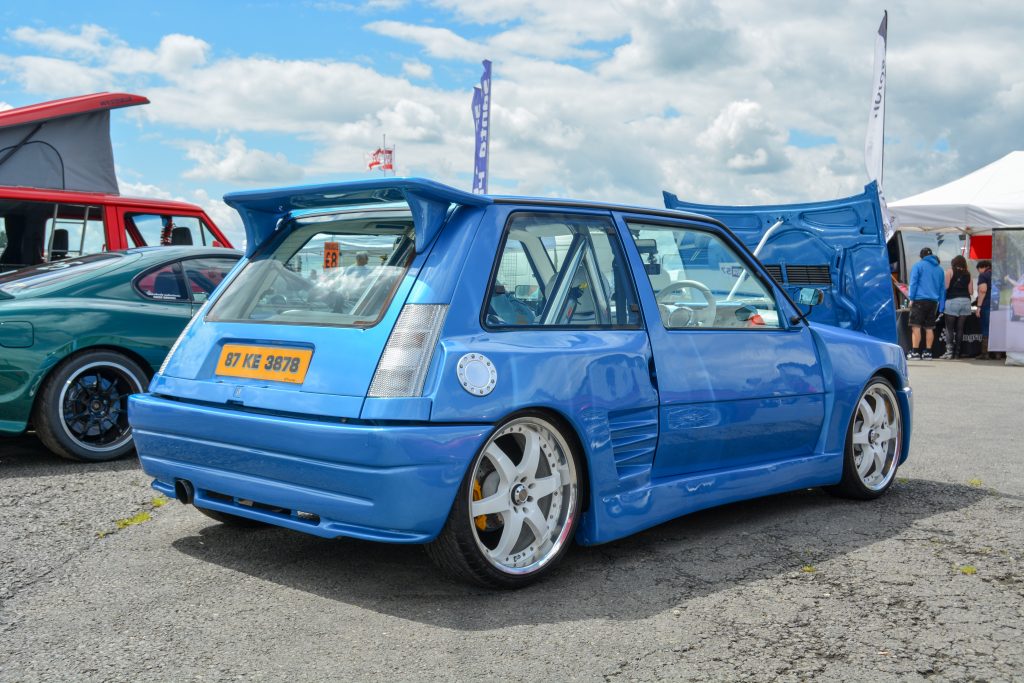
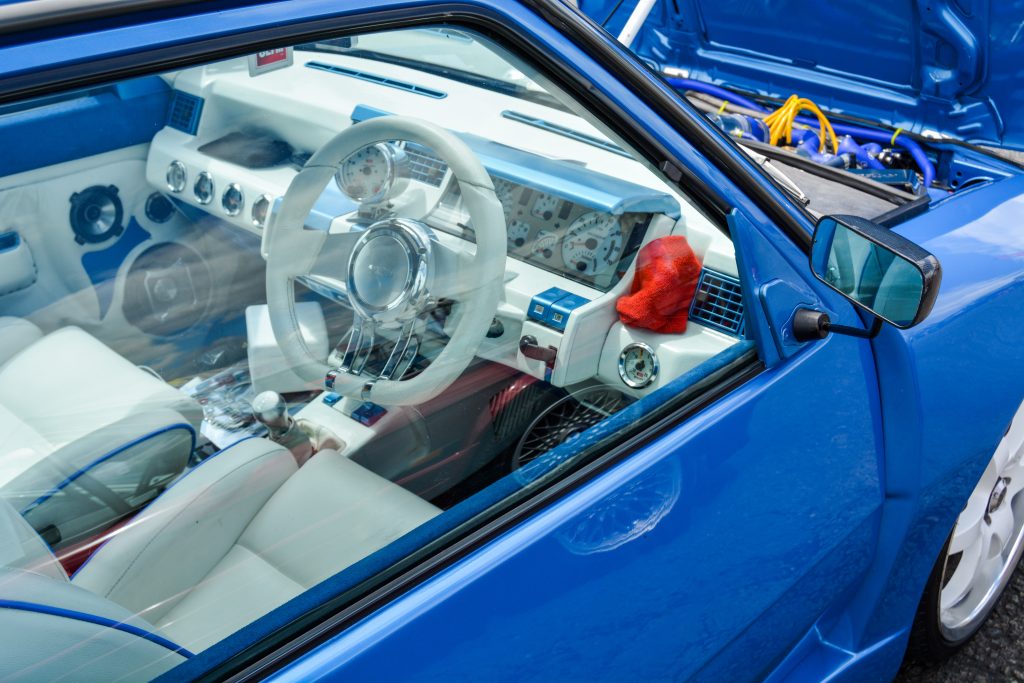
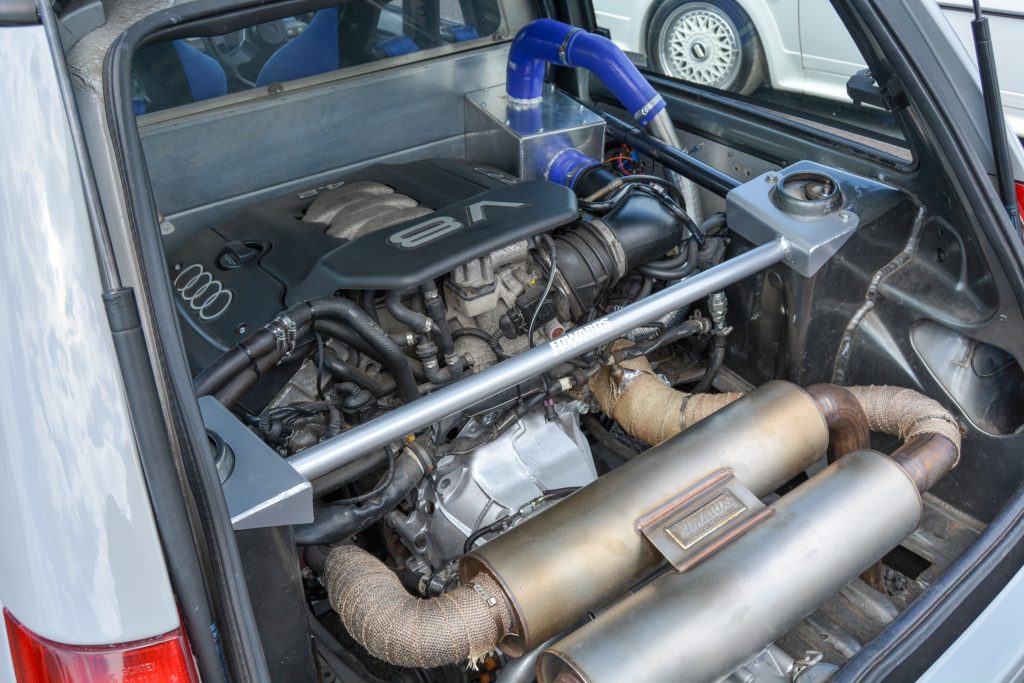
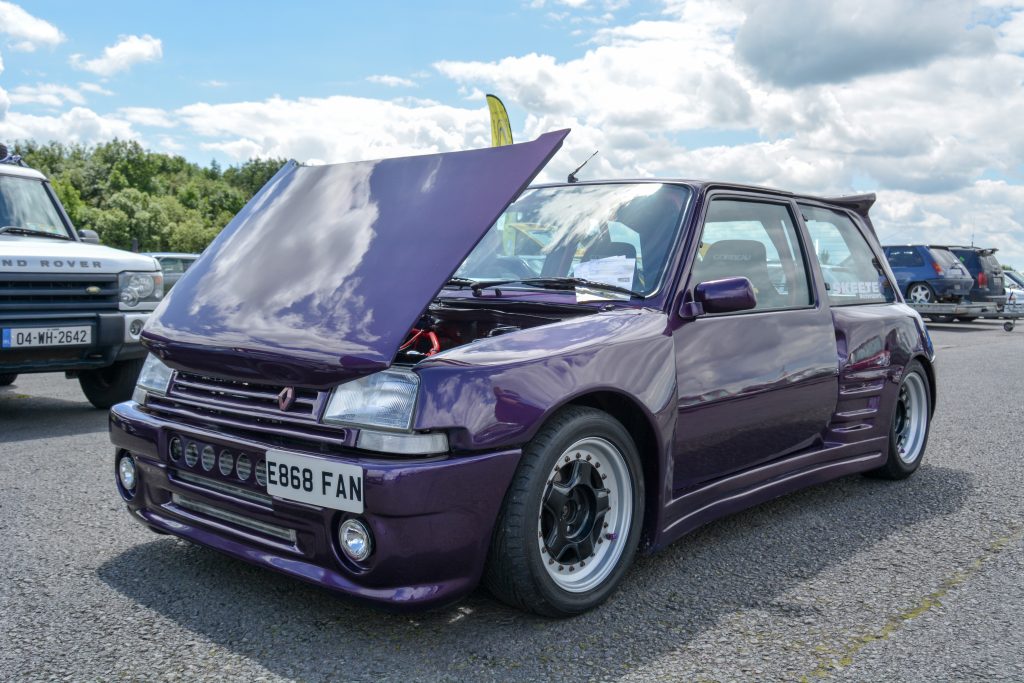
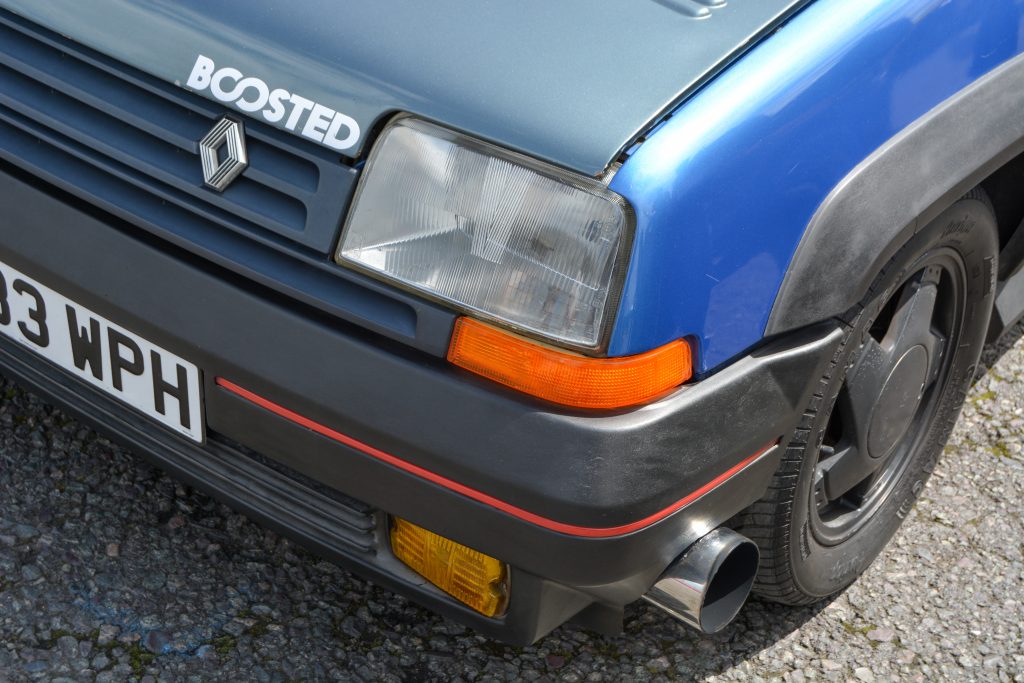

Phase Two: Waxing
In a climate hungry for hot hatch mischief, the modifying scene warmly embraced this lovable little scamp as one of their own as it became more affordable on the used market. Indeed, the timing was perfect: Fast Car magazine had been around since 1987, Max Power launched in 1993, Revs and Redline were on the shelves along with countless single-marque tuner mags, and cruise culture was absolutely huge. Every suburban car park, every seafront strip was bustling with the rustle of vividly-hued shellsuits and the piquant tang of fresh tyre smoke. It quickly became apparent that the GT Turbo was the perfect fodder for modding, and pretty much anything you can think of was done to them: 1.4 bottom ends were swapped out for Volvo 1.7 blocks, people were building twin-engined versions with an extra motor where the rear seats should be, all bets were off. And styling was just as important as tuning – wide-body kits from Dimma and Skeete were highly prized, and a competition-spec audio install looked ace alongside a custom leather-trimmed cabin. These, truly, were golden times for the Renault 5.

Phase Three: Full Moon
Ah, this is the unfortunate bit. The full moon, the showiest and most look-at-me phase. You see, while the GT Turbo had very much become the darling of the modding scene, there was always the danger of it eventually wandering into the realm of parody and pastiche. And so it came to pass in 2002, with the release of the movie Ali G Indahouse.
There’s a figure in the tuning world who’s key to this particular part of the narrative, and his name is Jamie Shaw. Back in the Max Power era, he made a name for himself for the amazingly innovative cars his company, Carisma, was building, predicting and indeed shaping modifying trends, all of which happened remarkably rapidly. Many in the scene will fondly remember his off-the-wall TVR Cerbera build, but the car he’s generally most closely associated with is the Renault 5 GT Turbo that came before. Shaw’s ever-changing Renault created a number of tropes that became must-haves in GT Turbo circles, including his distinctive sculpted front bumpers and mighty rear wings, as well as pioneering such fresh ideas as seatback-mounted amplifiers and a split rear window to accommodate a spoiler mount. Shaw’s very car actually appeared in Ali G Indahouse, where we also found the protagonist driving a bright yellow GT Turbo built by K-TEC, with multiple spoilers, an interior seemingly designed by Bananaman, and number plates that read ‘RE5PECT’.
The unthinkable had happened. The Renault 5 GT Turbo had fallen. It started as a fast-road icon with motorsport chops, before evolving into a champion of the modifying scene. But by 2002 it was, unequivocally, a laughing stock.
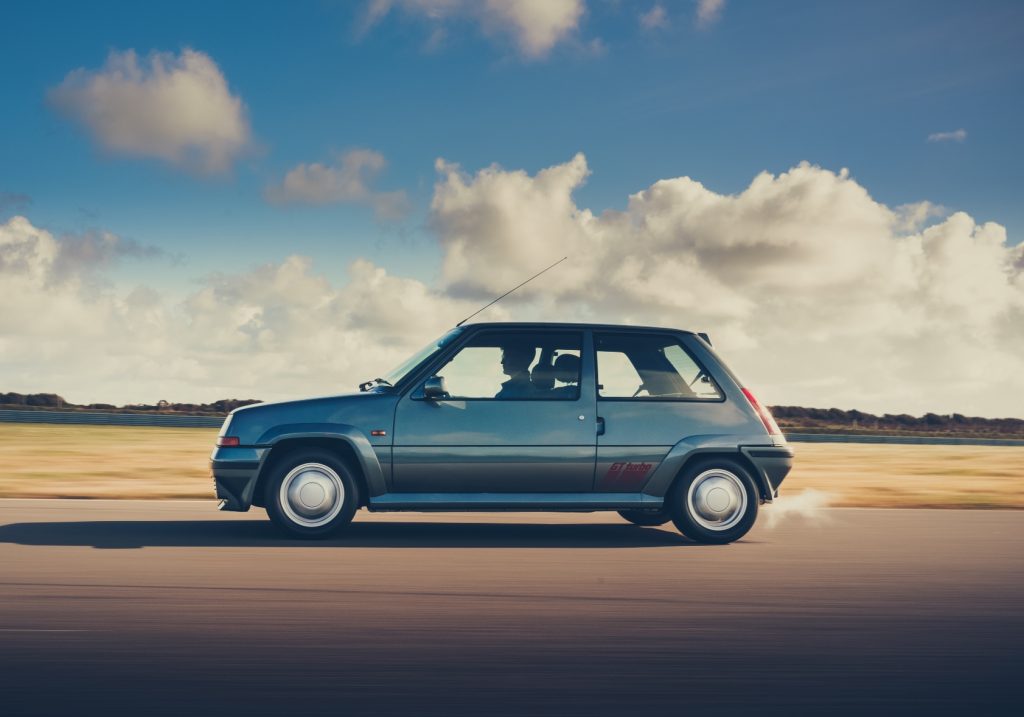
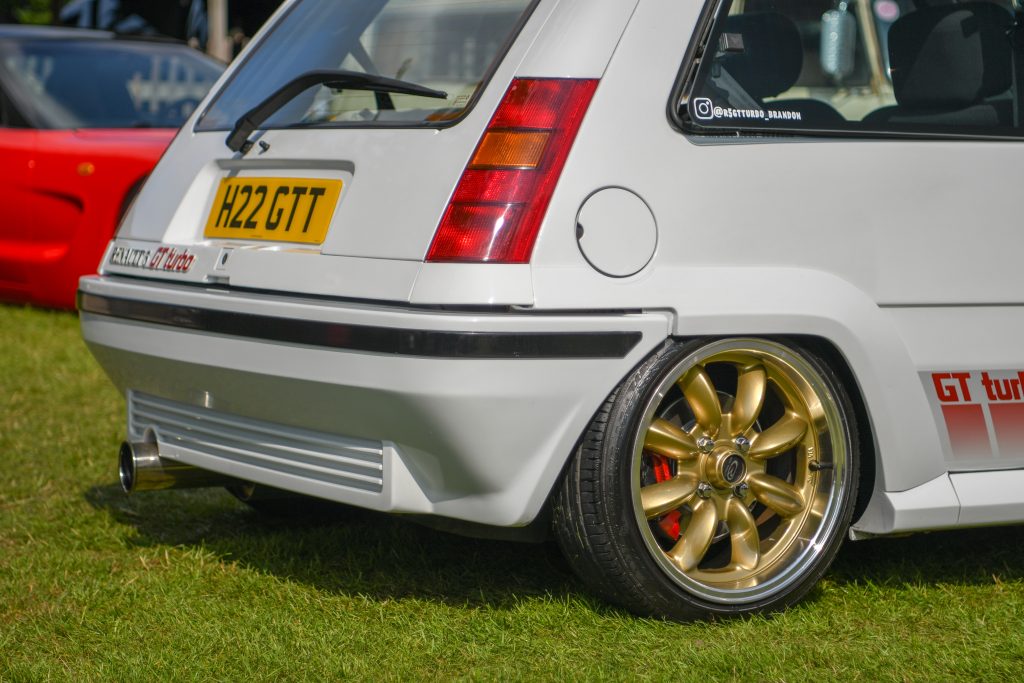
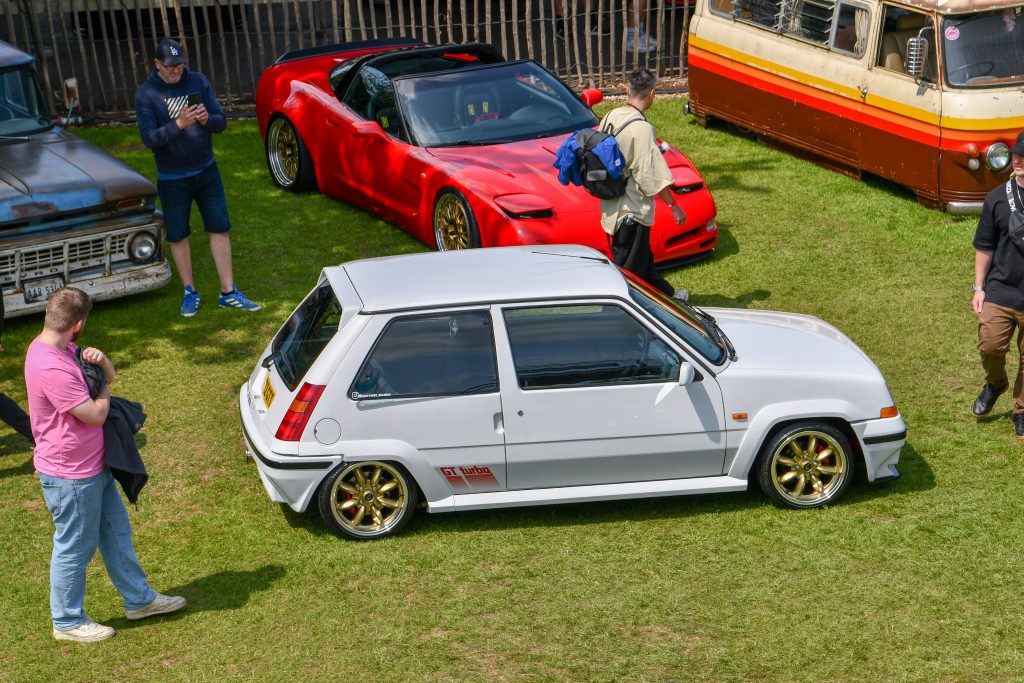
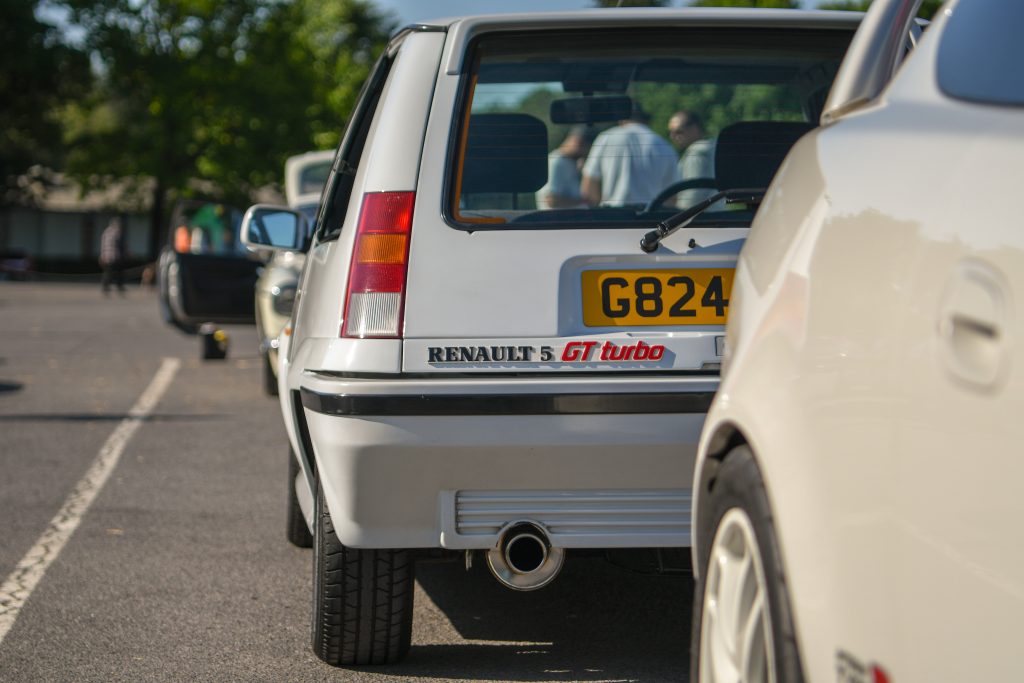
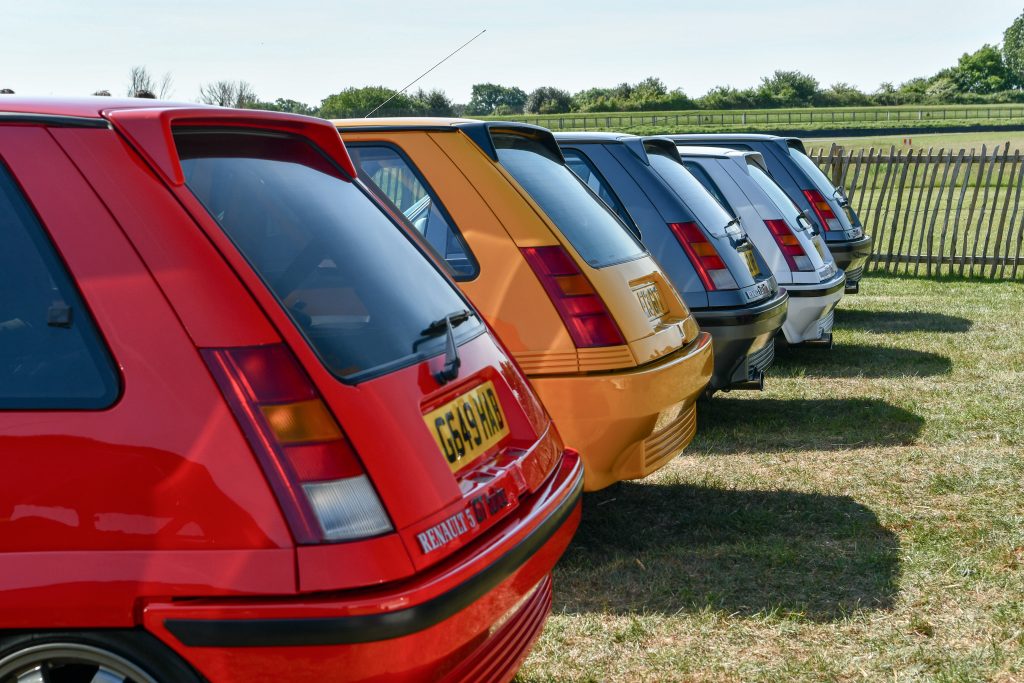
Phase Four: Waning
But who’s having the last laugh now? While our tortured lunar metaphor puts the Renault 5 GT Turbo in the waning phase in the modern era, it’s the Ali G reputation that’s waning rather than the general sense of enthusiasm. Indeed, the GT Turbo has gone the way of its period hot hatch brethren, the Peugeot 205 GTI and the Ford Escort RS Turbo: after years in the doldrums, and with a high rate of attrition caused by the age-old triumvirate of rust, people chucking them away and other people wrapping them around trees, nostalgia has finally won out. These days a Renault 5 GT Turbo is a highly sought-after item, whether it be tastefully modded, period tuned or factory-stock – the latter in particular, for the collector market. The Hagerty Price Guide lists a Condition 1 GT Turbo at £25,000, and recent auction results bear this out: Iconic Auctioneers sold a 1989 Raider at the NEC for £25,875, an unrestored ’88 was auctioned by Artcurial for €20,860, Bonhams sold a ’90 model at the Goodwood Members’ Meeting for £26,450. The phases have come full circle, as perennially is their way, and in the coming years the Renault 5 GT Turbo can enjoy its New Moon phase all over again.
Did you live through the Renault 5 GT Turbo era or are you just discovering its cult status today? Share your stories, memories, and opinions on this hot hatch hero in the comments below!
Keep your classic on the road
At Hagerty, our mission is simple: to help you protect the car you love. Discover trusted classic car insurance from the people who get it.
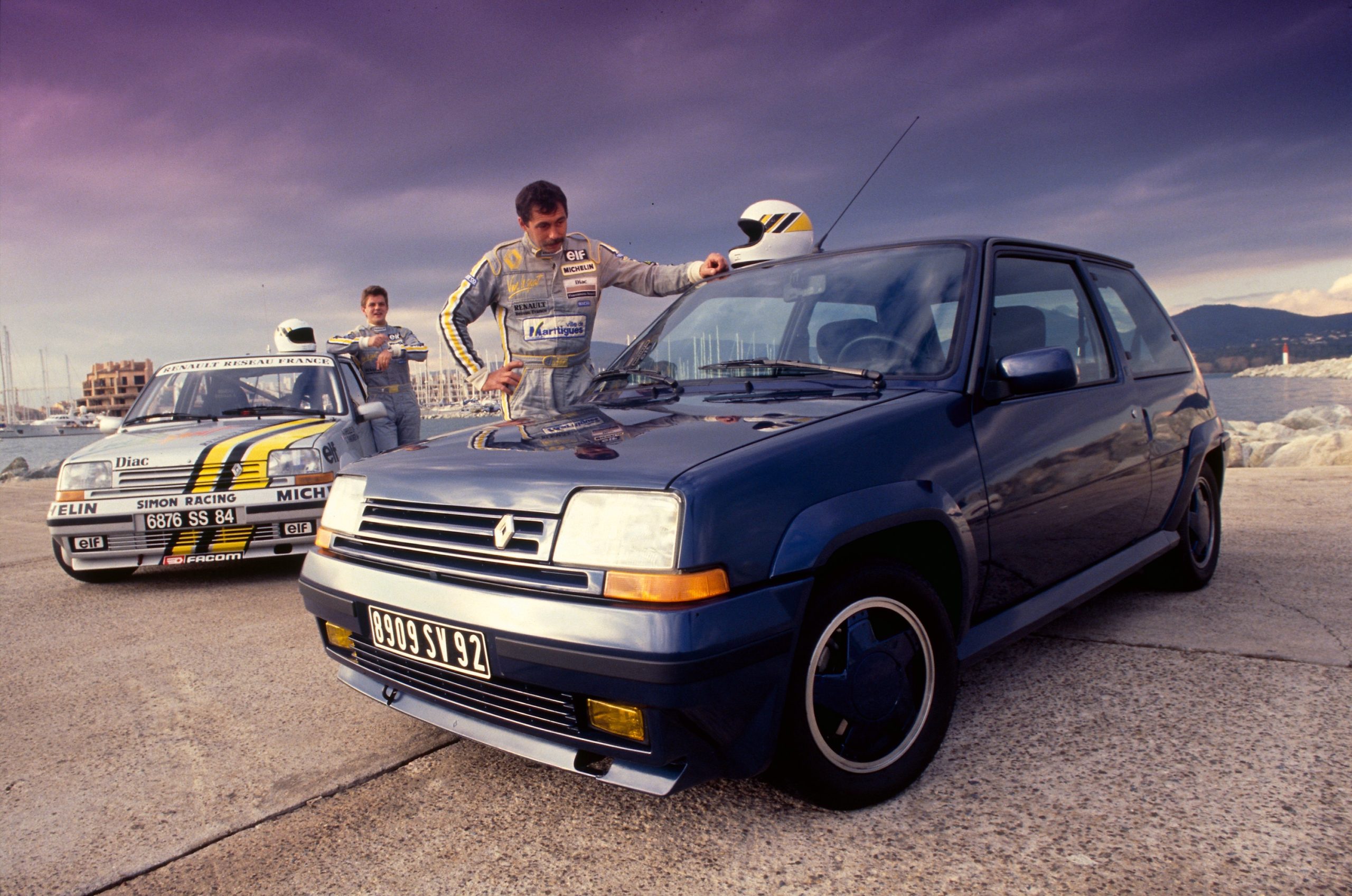







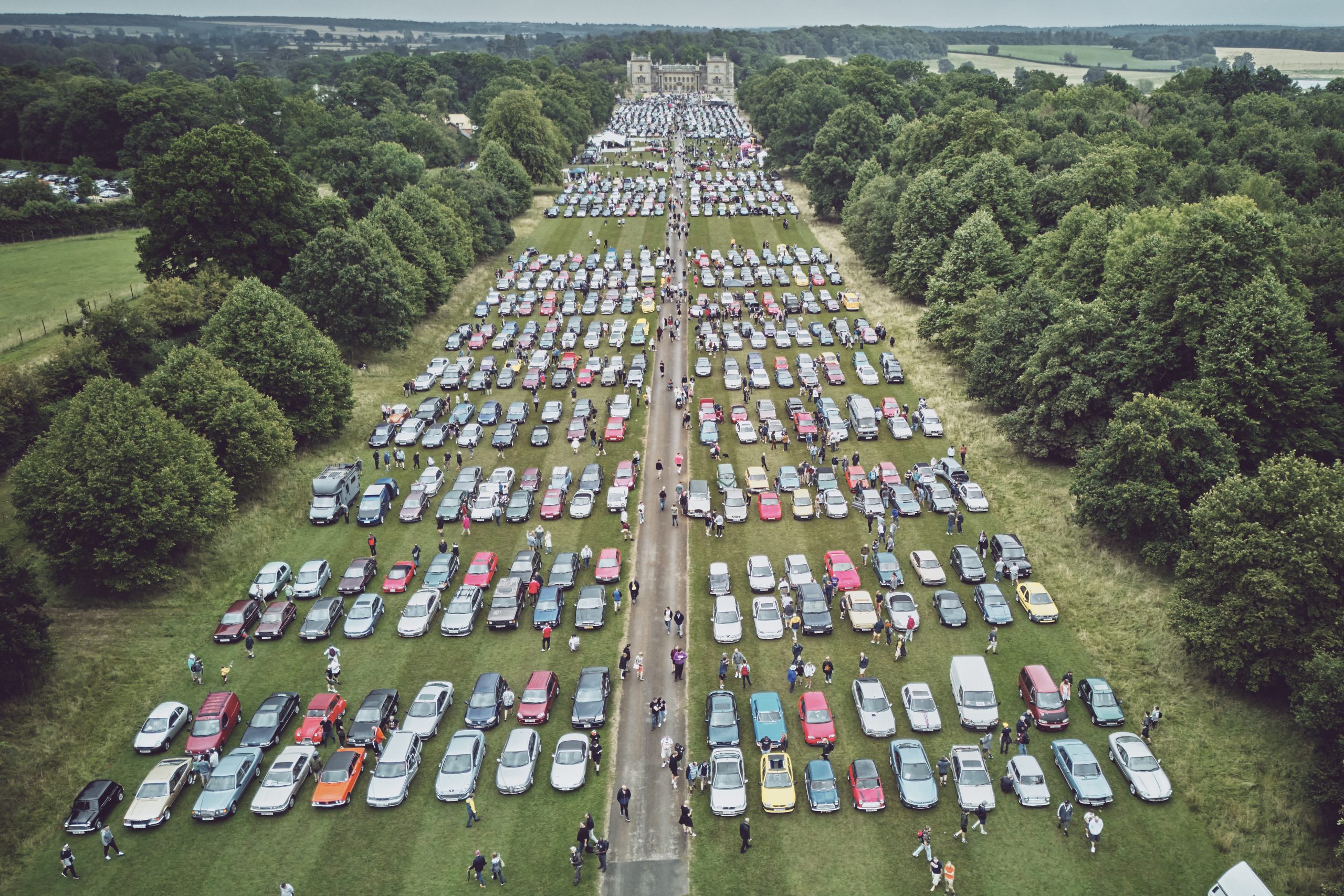
Great article.
There’s a lot more about Andrew Ridgeley’s exploits racing a Renault 5 Turbo in the chapter ‘Wham…Crash …Bang’ in Julian Gerard’s new book ‘Not Another Pit Stop’ There’s a wonderful illustration captioned – ‘Andrew Ridgeley crashed so many cars, Renault ran out of body shells.’
Julian’s team Gerard Motorsport ran Ridgeley’s car and won the championship many times. More info – text and illustrations.
http://www.notanotherpitstop.com
.
Brought back many many memories of this fantastic car!
I’ve owned two 1988 Phase 2 (from new) and a 1989 Phase 2 which I only sold last year! – see pic.
Unfortunately a shattered Femur sore off any chance of driving it again so it was time to move it on after 28 years of mostly being garage!
Needed a new owner to take it on for the next 28 years I hope🤞
Remember them well, never owned one. Not seen one for years and I go to a lot of classic car show. Plenty duels with 205 GTI s I would imagine!!
Early 90s to late 90s I had mate with them & 1.9.205 GTIs which I thought they were cheap & not on a patch of my 89 F reg Astra GTE 16V, my 2 mates always had problems with them particularly the E reg GT Turbo but my God that certainly seemed as quick as my car to 60, in comparison other than servicing I never spent anything on my 16V GTE other than over £3 grand insurance at 21 with 2 years no claims. I loved the Red top so much after 2 years I bought a 2 years old J reg GSi 2000 Cavalier. Another mate also had an E reg XR2 which was a brilliant car which it should it took my mate 5 years to buy it off its owner my mum, who had from around a years .